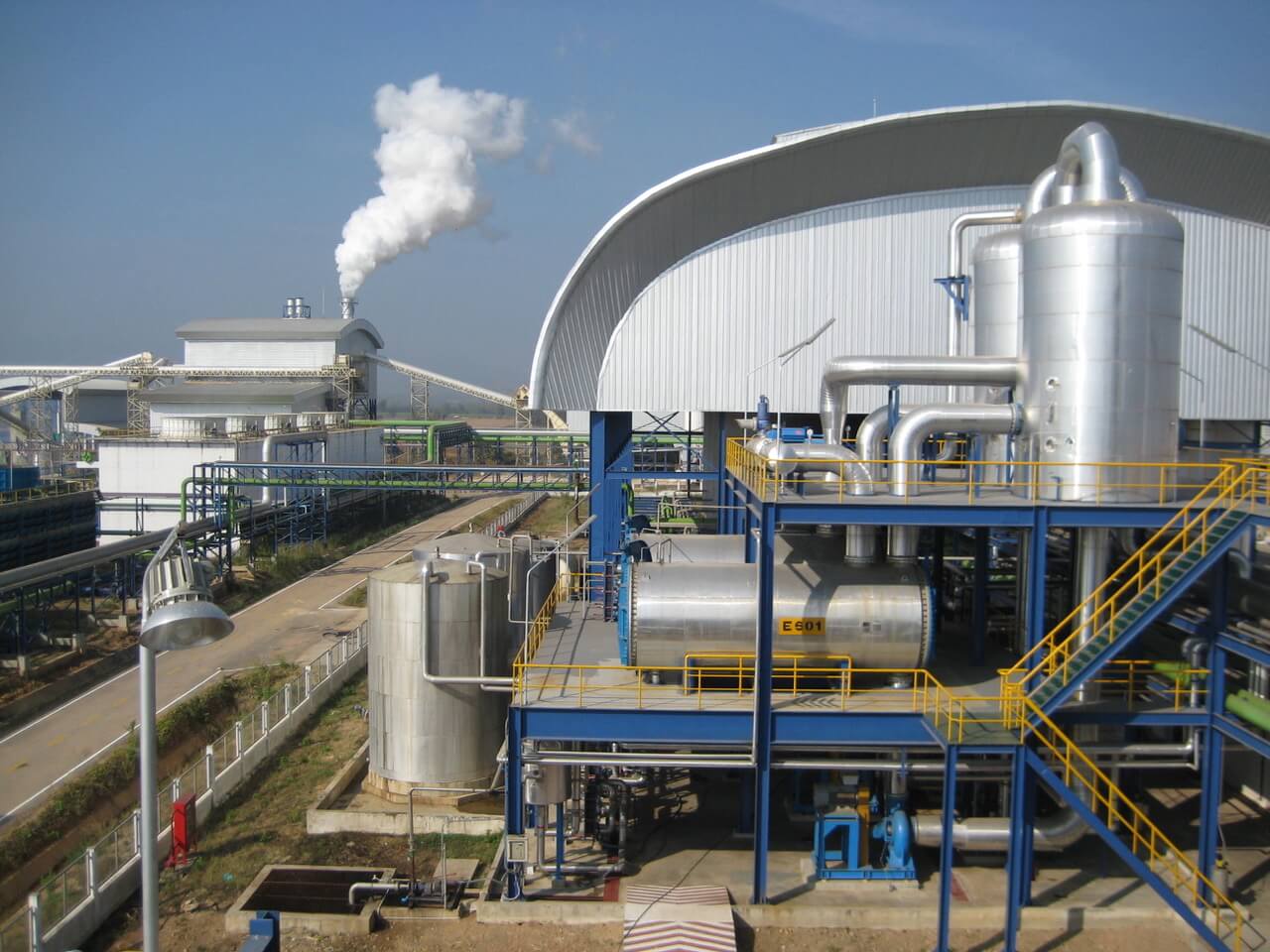
Solutions
& Technologies
Vinasses valorization
The recovery of vinasse is one of the many biotechnology solutions offered by INTERIS. Vinasses are effluents with a high hard organic load that necessarily require treatment depending on the raw material fermented.
INTERIS units are equipped with high-performance concentration devices, reducing the volume of vinasse by more than 80% while generating a stable, easily storable residue. This approach results in significant savings on transport costs, particularly for spreading.
INTERIS offers an innovative alternative involving the anaerobic digestion of vinasse. The biogas produced in this way can be recycled by being burnt in a boiler to generate steam or to power a gas engine or turbine, thereby producing electricity.
What’s more, thanks to cutting-edge technology, sugarcane vinasse can be transformed into a solid product that can be used to produce powdered fertilisers, thereby contributing to a more sustainable circular economy.
Incinerating concentrated vinasse or drying methanised vinasse are alternative methods of producing ethanol without generating unwanted liquid effluents.
In conclusion, using INTERIS to recover vinasse opens up new prospects for sustainable, energy-efficient and environmentally-friendly production. The advanced biotechnological solutions proposed by INTERIS offer an innovative approach to making the most of these organic effluents while contributing to the transition towards a circular and responsible economy.
The Vinasses valorisation process is one of numerous solutions proposed by INTERIS.
Vinasses are effluents with a strong organic charge that need a mandatory treatment depending on the fermented raw material.
An alternative is to conduct anaerobic digestion. The biogas product can be burnt in boiler for producing steam, or for feeding a gas engine or gas turbine to generate electricity.
INTERIS holds an advanced technology to transform digested sugar cane vinasses into solid product, that can be used to produce powder fertilizers.
The incineration of concentrated vinasses or the drying of methanized vinasses enables to produce some ethanol with “zero liquid effluent”.
